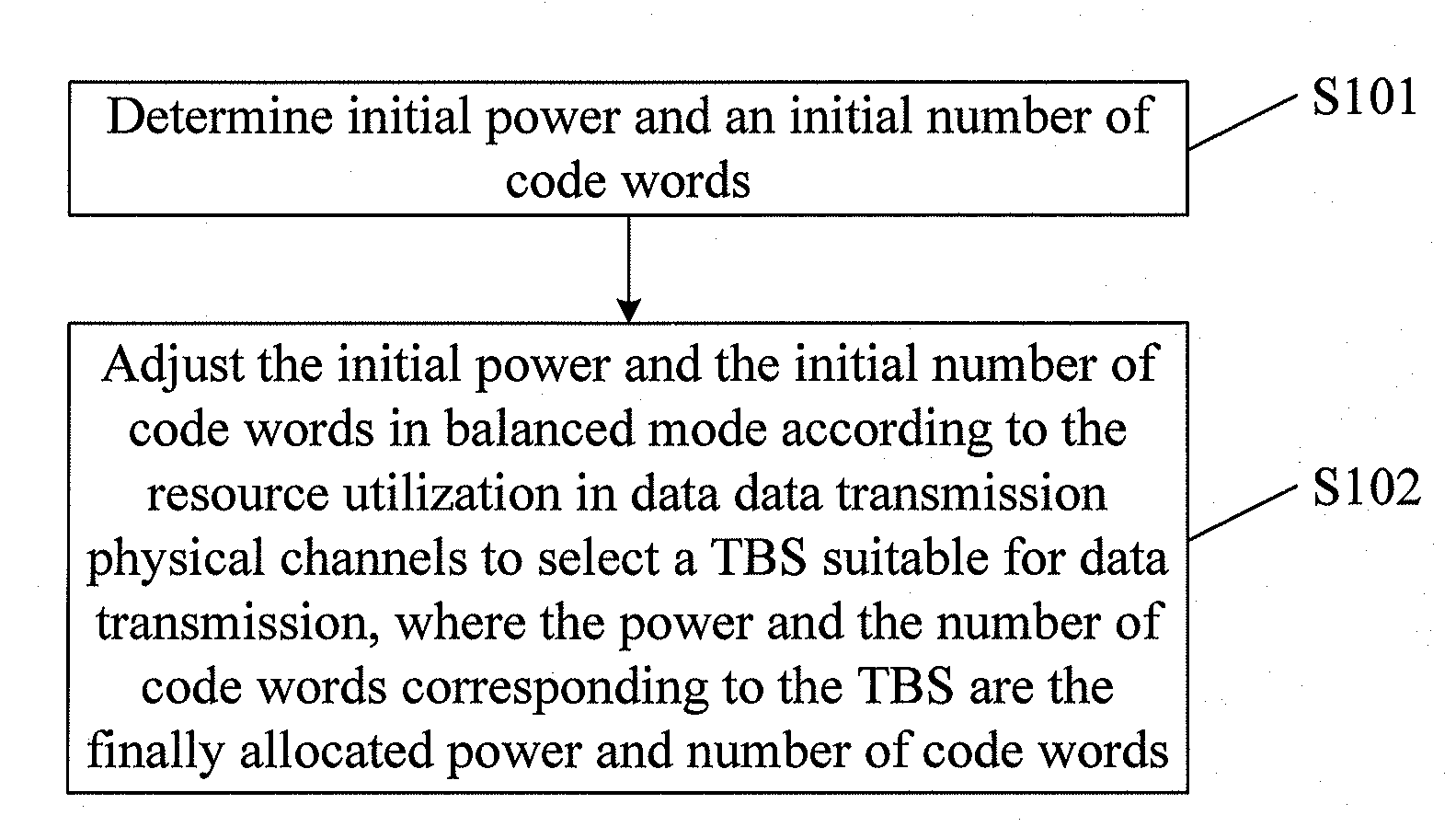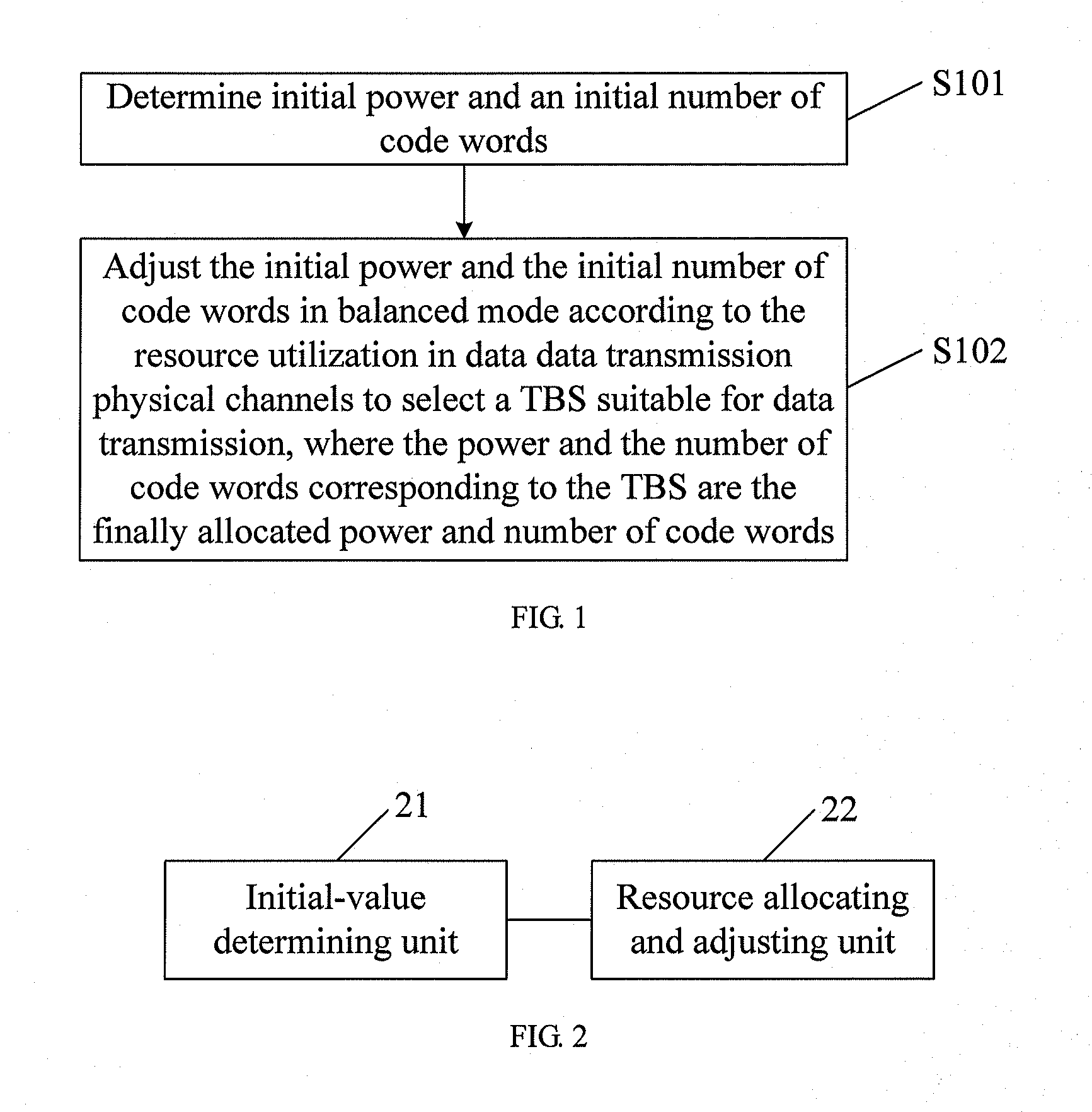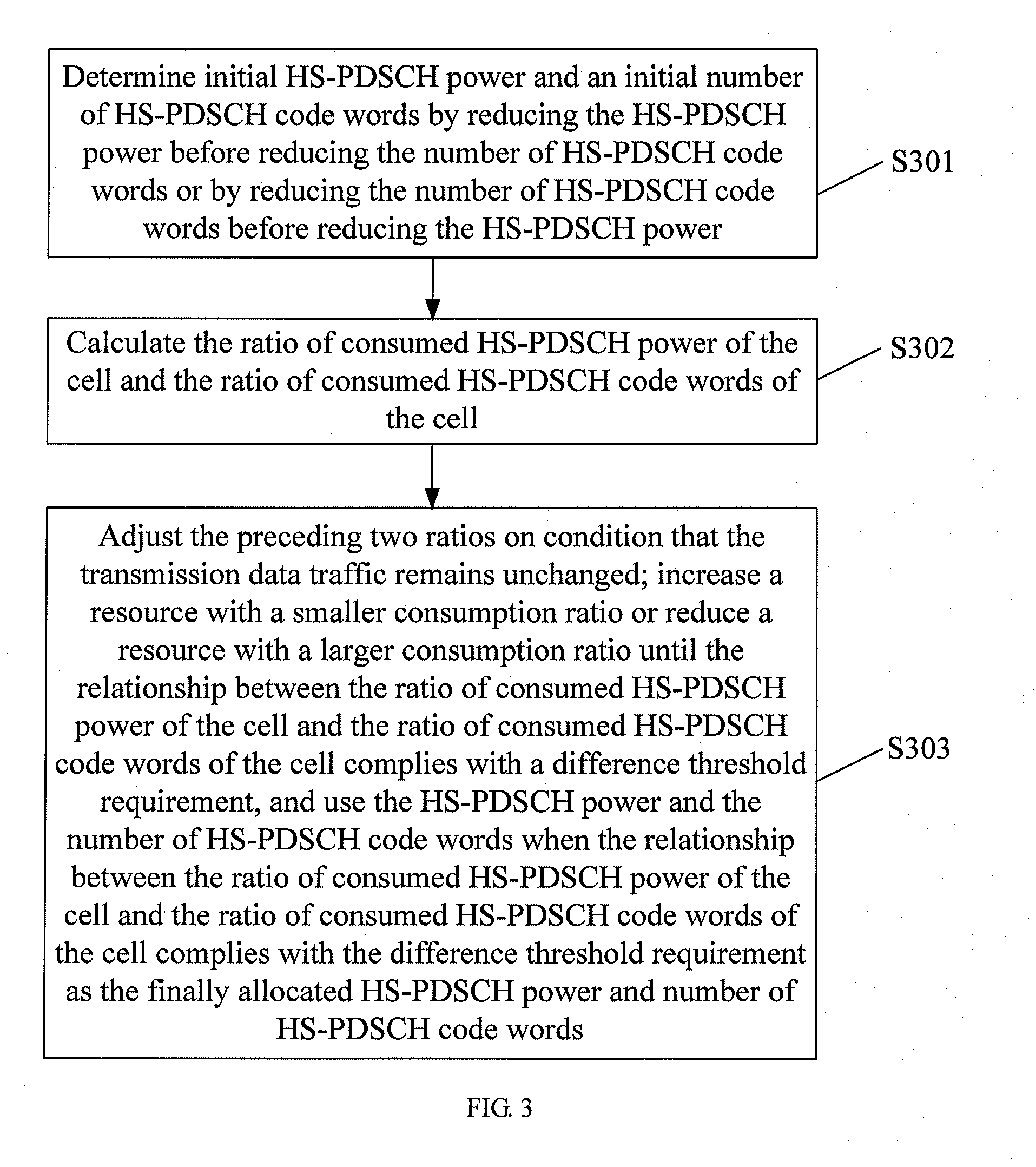Method and apparatus for allocating the number of code words and power
a technology applied in the field of wireless communication technologies, can solve the problems of failure of air interface transmission resources allocation and lack of proper technical solutions for allocating the number of code words and power in balanced mod
- Summary
- Abstract
- Description
- Claims
- Application Information
AI Technical Summary
Benefits of technology
Problems solved by technology
Method used
Image
Examples
first embodiment
[0056]The following describes the present application. As shown in FIG. 3, the embodiment includes the following steps:
[0057]Step S301: Determine initial HS-PDSCH power and an initial number of HS-PDSCH code words by reducing HS-PDSCH power before reducing the number of HS-PDSCH code words or by reducing the number of HS-PDSCH code words before reducing the HS-PDSCH power.
[0058]The method of reducing the number of HS-PDSCH code words before reducing the HS-PDSCH power is as follows: An available maximum CQI is obtained according to currently available maximum HS-PDSCH power and a CQI that is reported by the UE; a TBS is obtained according to the maximum CQI and the currently available maximum number of HS-PDSCH code words; if the obtained TBS is greater than the data traffic in the buffer, the currently available maximum number of HS-PDSCH code words is reduced and the maximum CQI is maintained; a new TBS is obtained according to the reduced number of HS-PDSCH code words and the max...
second embodiment
[0076]The following describes the present application. As shown in FIG. 4, the embodiment includes the following steps:
[0077]Step S401: Use currently available maximum HS-PDSCH power as the initial HS-PDSCH power, and select a maximum CQI according to the initial HS-PDSCH power and the CQI that is reported by the UE.
[0078]Specifically, the currently available maximum HS-PDSCH power may be current maximum HS-PDSCH power of the cell that can be allocated or available maximum HS-PDSCH power for the data transmission under the policy restriction.
[0079]Step S402: Use the currently available maximum number of HS-PDSCH code words as the initial number of HS-PDSCH code words, and obtain a TBS according to the maximum CQI and initial number of HS-PDSCH code words.
[0080]Specifically, the currently available maximum number of HS-PDSCH code words may be a current maximum number of HS-PDSCH code words of the cell that can be allocated or an available maximum number of HS-PDSCH code words for dat...
third embodiment
[0095]The following describes the present application. As shown in FIG. 5, the embodiment includes the following steps:
[0096]Step S501: Use a currently available maximum HS-PDSCH power as an initial HS-PDSCH power, and select a maximum CQI according to the initial HS-PDSCH power and the CQI that is reported by the UE.
[0097]Specifically, the currently available maximum HS-PDSCH power may be current maximum HS-PDSCH power of the cell that can be allocated or available maximum HS-PDSCH power for the data transmission under the policy restriction.
[0098]Step S502: Use a currently available maximum number of HS-PDSCH code words as the initial number of HS-PDSCH code words, and obtain a TBS according to the maximum CQI and initial number of HS-PDSCH code words.
[0099]Specifically, the currently available maximum number of HS-PDSCH code words may be the maximum number of HS-PDSCH code words of the cell that can be allocated or the available maximum number of HS-PDSCH code words for data tran...
PUM
 Login to View More
Login to View More Abstract
Description
Claims
Application Information
 Login to View More
Login to View More - R&D
- Intellectual Property
- Life Sciences
- Materials
- Tech Scout
- Unparalleled Data Quality
- Higher Quality Content
- 60% Fewer Hallucinations
Browse by: Latest US Patents, China's latest patents, Technical Efficacy Thesaurus, Application Domain, Technology Topic, Popular Technical Reports.
© 2025 PatSnap. All rights reserved.Legal|Privacy policy|Modern Slavery Act Transparency Statement|Sitemap|About US| Contact US: help@patsnap.com



